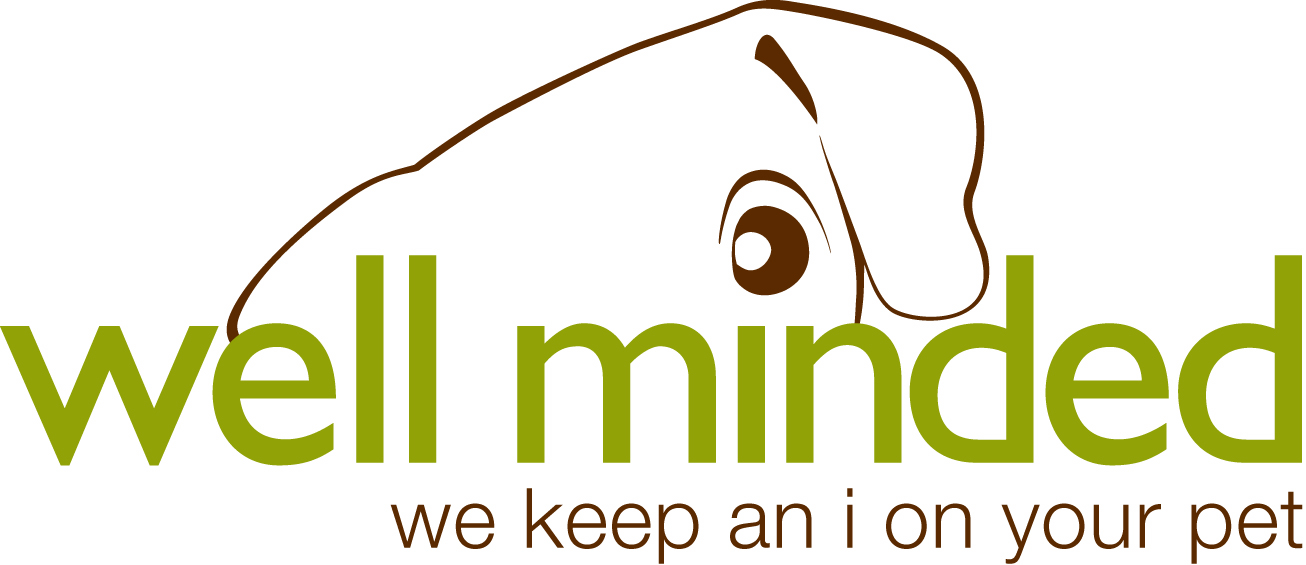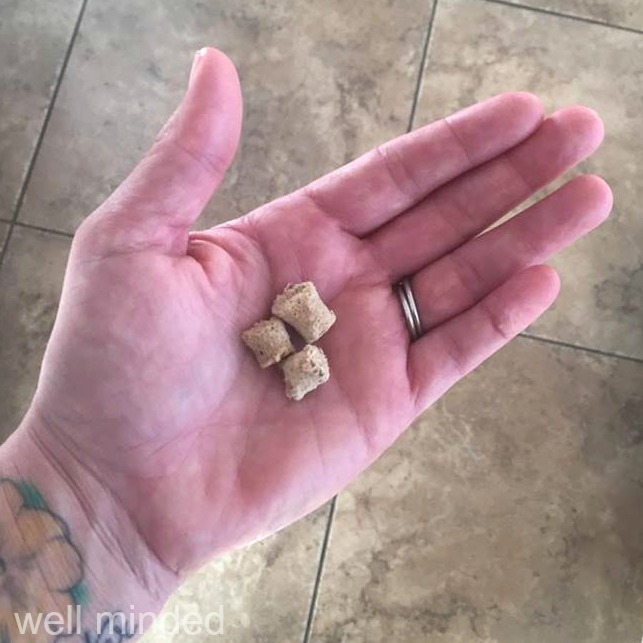As you likely know, I have been a professional pet sitter for over ten years, and an amateur one since I was a wee lassie. When going in and out of countless homes and taking care of a wide array and large number of animals, I've seen a lot. Some people have OCD, so I'm afraid to touch anything, and other people look like they haven't seen a dust rag in decades, so I'm afraid to touch anything. Most clients thankfully fall somewhere in the middle of that spectrum. But considering cleanliness, alone, doesn't paint the whole picture.
Breaking Up is Hard to Do: When Should a Pet Sitter Fire a Client? wellmindedpets.com
When a new potential client comes to me and we set up an initial consultation, it is important that they trust me and get a sense of who I am. After all, I'll be coming into their home when they are away and taking care of their fur babies. But just as I'm presenting myself to them, they are presenting themselves to me, and it's important that I get a sense of the kind of pet parent they are. Do they treat their animals well, and am I comfortable with them?
I've heard some nightmare stories from other pet sitters, and, thankfully, my bad experiences with clients have been few and far between. There was one occasion when I refused a job right there at the interview. It was summer, and the family was going away on a week's vacation. The family dog, a sweet-as-can-be Rottweiler, was an "outdoor dog." Though dogs love the outdoors, no dog should be made to live exclusively outdoors, especially in extreme temperatures. You've seen the recent news about how states are making it illegal to leave your dog out in freezing temperatures? (Yay!) Well, here in Phoenix, it can get to be 120 degrees in the summer, which can be just as harsh. The matriarch of this particular family told me that they planned to rip open the middle of a twenty pound bag of kibble, leave a trough of water, and could I please check on the dog four days into their seven-day vacation, just to be sure everything is okay?
I let her know that I had several concerns, and that I would be happy to check on her dog multiple times a day, as long as she let him in the house, otherwise I would have to refuse the job. I asked her what would happen if the dog tipped over the water trough on day one or if the open food became rancid or attracted a pack of coyotes. Not to mention the danger of her dog becoming overheated in the middle of the day. She nodded and said she understood my concerns. When we parted, she said she would consider my proposal and would be in touch. I never heard back. And, yes, I asked that local animal control keep an eye on the pooch.
why a pet sitter might fire a client
That family never became a client, and I feel fortunate that I haven't had to refuse work like that very often. And only on a couple of occasions have I had to fire a client for nonpayment. I'm sorry...I can't take care of your pets again until you pay your balance from your vacation three months ago. Hmmm. Just as a client could fire a pet sitter for any number of reasons, a pet sitter can also choose to fire a client. Each professional pet sitter's threshold of pain is different, but here are a few reasons why a pet sitter might fire a client:
• nonpayment (duh)
• mistreatment of the animals by the owner
• not providing a key (don't make your pet sitter crawl through the doggie door)
• making unreasonable requests
• health concerns regarding cleanliness of the home
• not requesting enough visits to properly care for the animal(s)
• co-care (my clients sign terms and conditions that state that if someone else will also be providing care–such as a neighbor or relative–during the service period, I am released of ALL liability)
• anything that makes the pet sitter uncomfortable
when the lines between professional and personal become blurred
Though I am a professional, I provide a personal service. Quite often my clients and I know personal things about each other, and we bond over their pets. So lines between professional and personal can become blurred. I establish reasonable boundaries so that I can provide a professional service in a personal way.
About a year ago, I experienced some unusual behavior in a long-standing client. Though I loved her dog very much and it was heartbreaking to have to part ways, the situation escalated to the point that I no longer felt comfortable working with her.
Charlene* first called me to her home to request periodic care for her therapy dog, Hannah. Charlene seemed like a very thorough pet parent. She let me know that Hannah was a therapy dog to her, but I didn't ask questions about her condition. She let me know that since Hannah was almost always with her, it would be difficult for the dog when she needed to be apart from her, so she wanted me to come to the home and spend time if she had to be gone for more than a couple of hours for work or some such thing. The initial consult was quite lengthy, as Charlene liked to chat, but she was very nice, and her dog, Hannah, was delightful.
Over the next several months, Charlene would request my services a couple of times a week, usually with a couple of days notice. She then started requesting that I take Hannah into my home for longer stretches. I don't normally take my clients' dogs into my home, but Hannah was so wonderful, that I agreed and didn't mind at all. We agreed on an hourly rate, and she always paid me immediately after every service.
As time went on, I took care of Hannah more and more often. And with little, if no, notice. Charlene's demeanor became more frantic, as if she was always in the midst of some emergency. If I didn't answer her call, she would call over and over and over again. I began to question her mental stability, but her dog was great and she paid me well, so I was patient with her.
I realized I had to set some boundaries when she showed up at my front door with her dog unannounced. "Charlene, I'm happy to take Hannah today, but, in the future, I'll need you to set up service in advance. I don't mind last-minute bookings, but I can't guarantee that I'll be available on little or no notice." She apologized, handed me the leash, and frantically made her way to her car and drove off. She picked up Hannah later that afternoon and paid me, as usual.
Over the next few weeks, Charlene started to call me more frequently to take care of Hannah, and our phone chats became quite lengthy. I'm not one to cut people off if they are sharing sensitive information with me, but I began to feel uncomfortable. Charlene seemed to be in some trouble, which is why she was asking me to take Hannah so frequently. She just didn't want to expose her to that. She shared with me that her husband, who lived in another state, was "after her" and was emotionally abusive. She would stay in this hotel or that hotel to escape him, and she'd leave Hannah with me for days at a time. I noticed that Hannah seemed tired all the time. She would come over and sleep and sleep and sleep. I think she was exhausted from dealing with her owner's emotional distress.
It all came to a head when we were giving a birthday party for my teenaged son. He had a bunch of his friends over, and we had some family there to celebrate, as well. The doorbell rang unexpectedly in the middle of the party, and there stood Charlene and Hannah. Charlene asked if she could come in. I told her that it wasn't a good time...that we were hosting a party. She begged, and said it would only be for a minute, so I let her in.
Hannah made herself right at home, and Charlene collapsed in a heap on the floor just inside the front door. She was in emotional distress, running from her husband. She asked if she and Hannah could stay the night in my home. I told her that I didn't feel comfortable with that, that Hannah was welcome to stay, but suggested Charlene go to a hotel or shelter. After a couple of hours of conversation, I realized that Charlene was making things up. Her mental instability had gradually gotten to the point where she thought the mob and the pope were after her. She would have to travel to Iran and "take out" the men who were doing this to her. She wanted me to keep Hannah. I told her I didn't feel comfortable with her in my home, asked that she leave, but let her know that her dog could stay as long as she needed. I suggested she seek psychological help.
She slept in her car outside my house that night.
The next morning, Charlene came to the door to retrieve Hannah. As much as I loved Hannah, I knew this relationship had to end. Charlene said she understood, and promised she would seek psychological treatment. I watched she and Hannah drive off, and I cried for Hannah. I don't know if she ever did seek help, and I don't know where she and Hannah are, now, but I never heard from her again.
I contacted the police out of concern for her, and they said though they couldn't give me details, they already had a file on her. I left it in the hands of the authorities. Though I think about Hannah every day, I've made peace with the situation.
Part of me feels awful for breaking it off. I loved that dog. But when the client–however mentally unstable–disregarded professional boundaries that I had expressed to her and her behavior began to affect my family, I knew it was time to break up. This was an extreme case that I let continue way too long, but it taught me valuable lessons about setting boundaries with clients and recognizing when I'm being taken advantage of.
Are you a pet sitter or other professional that provides a personal service? Have you ever had to break up with a client?
* All names have been changed in the interest of confidentiality.



















